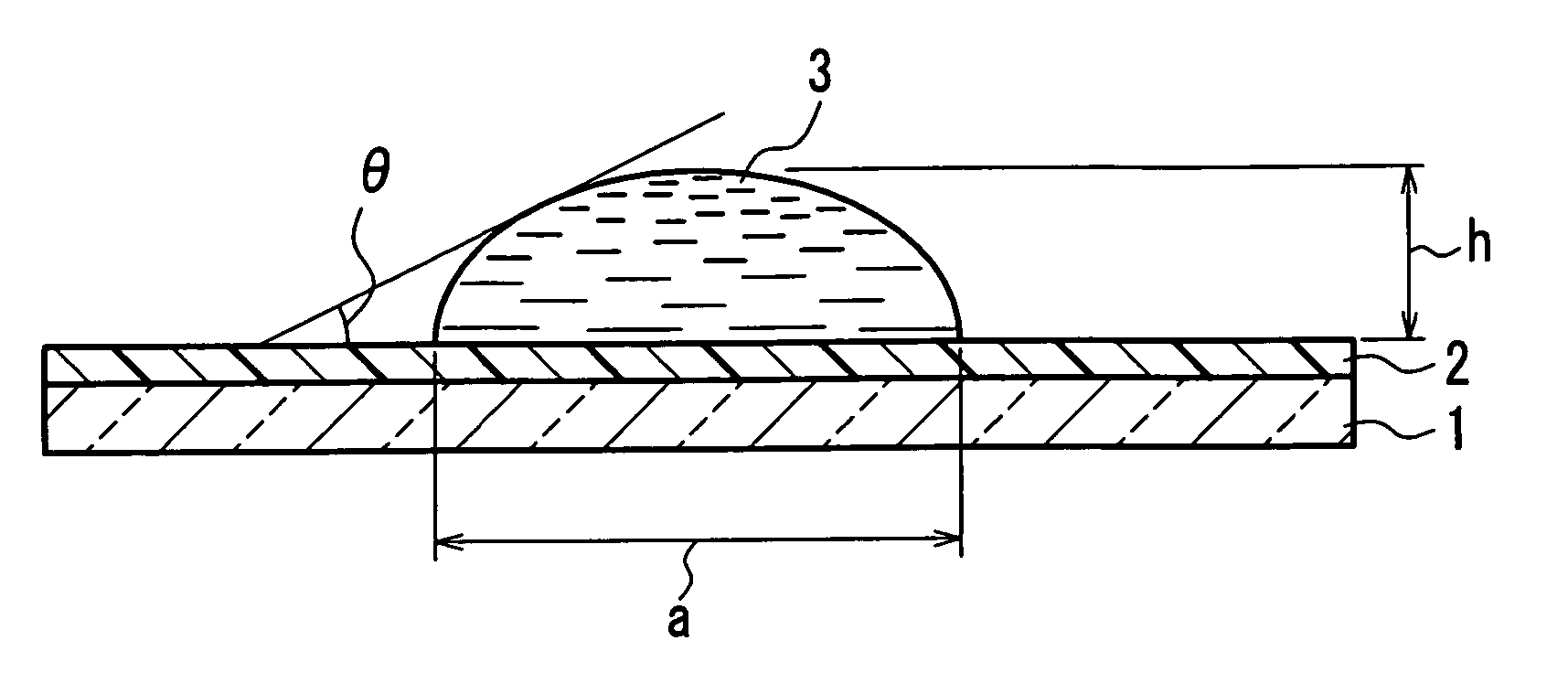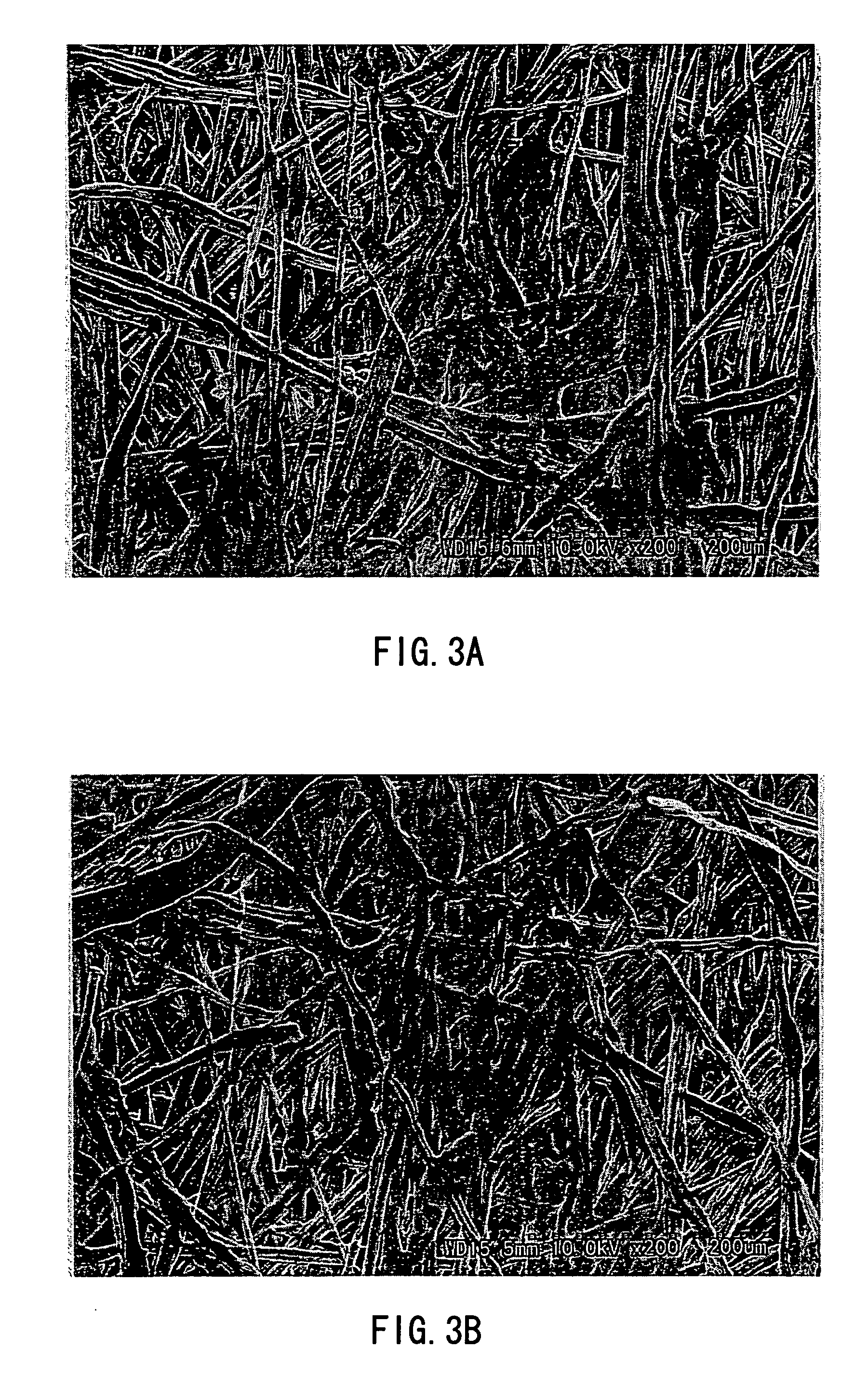Separator for organic electrolyte battery, process for producing the same and organic electrolyte battery including the separator
a technology of organic electrolyte and separator, which is applied in the field of separators, can solve the problems of complex production process of fine porous film, high cost, short circuit, etc., and achieve excellent level of electrolytic solution holding ability, excellent yield in production, and produced inexpensively
- Summary
- Abstract
- Description
- Claims
- Application Information
AI Technical Summary
Benefits of technology
Problems solved by technology
Method used
Image
Examples
example 1
[0124] 50 mass % of the fiber 1 having a fineness of 1.4 dtex (post-split minor-axis thicknesses: 2.57 μm (PP), 2.66 μm (EVOH)), 30 mass % of the fiber 3 of 0.8 dtex (fiber diameter: 10.3 μm), and 20 mass % of the fiber 4 of 0.6 dtex (fiber diameter: 8.37 μm) were mixed to prepare a water-dispersed slurry to a concentration of 0.5 mass %. From the water-dispersed slurry thus obtained, wetlaid webs having an mass per unit area of 15 g / m2 was produced using a cylinder type wet papermaking machine and a short wire type wet papermaking machine. The two webs were combined together. Next, a thermal treatment was performed at 135° C. using a cylinder dryer for drying, and at the same time, the heat-and-humidity gelling resin of the fiber 1 and the sheath component of the fiber 4 temporarily bonded the fibers. The wetlaid nonwoven sheet having an mass per unit area of 30 g / m2 was rolled up. In the resultant wetlaid nonwoven sheet, substantially 100% of the fiber 1 was split and substantiall...
example 2
[0127] An organic electrolyte battery separator was obtained with a process similar to that of Example 1, except that the fiber 3 had 1.2 dtex (fiber diameter: 13.1 μm) and the fiber 4 had 1.2 dtex (fiber diameter: 13.0 μm). The average fiber diameter of a pre-gel processing nonwoven sheet of the resultant separator was 7.81 μm. The average fiber diameter of the fibers other than the heat-and-humidity gelling resin was 9.52 μm.
example 3
[0128] An organic electrolyte battery separator was obtained with a process similar to that of Example 1, except that the fiber 1 had 3.3 dtex (post-split minor axis thickness: 3.96 μm (PP), 4.06 μm (EVOH)). The average fiber diameter of a pre-gel processing nonwoven sheet of the resultant separator was 6.78 μm. The average fiber diameter of the fibers other than the heat-and-humidity gelling resin was 7.68 μm.
PUM
| Property | Measurement | Unit |
|---|---|---|
| pore diameter | aaaaa | aaaaa |
| pore diameter | aaaaa | aaaaa |
| diameter | aaaaa | aaaaa |
Abstract
Description
Claims
Application Information
 Login to View More
Login to View More - R&D
- Intellectual Property
- Life Sciences
- Materials
- Tech Scout
- Unparalleled Data Quality
- Higher Quality Content
- 60% Fewer Hallucinations
Browse by: Latest US Patents, China's latest patents, Technical Efficacy Thesaurus, Application Domain, Technology Topic, Popular Technical Reports.
© 2025 PatSnap. All rights reserved.Legal|Privacy policy|Modern Slavery Act Transparency Statement|Sitemap|About US| Contact US: help@patsnap.com



